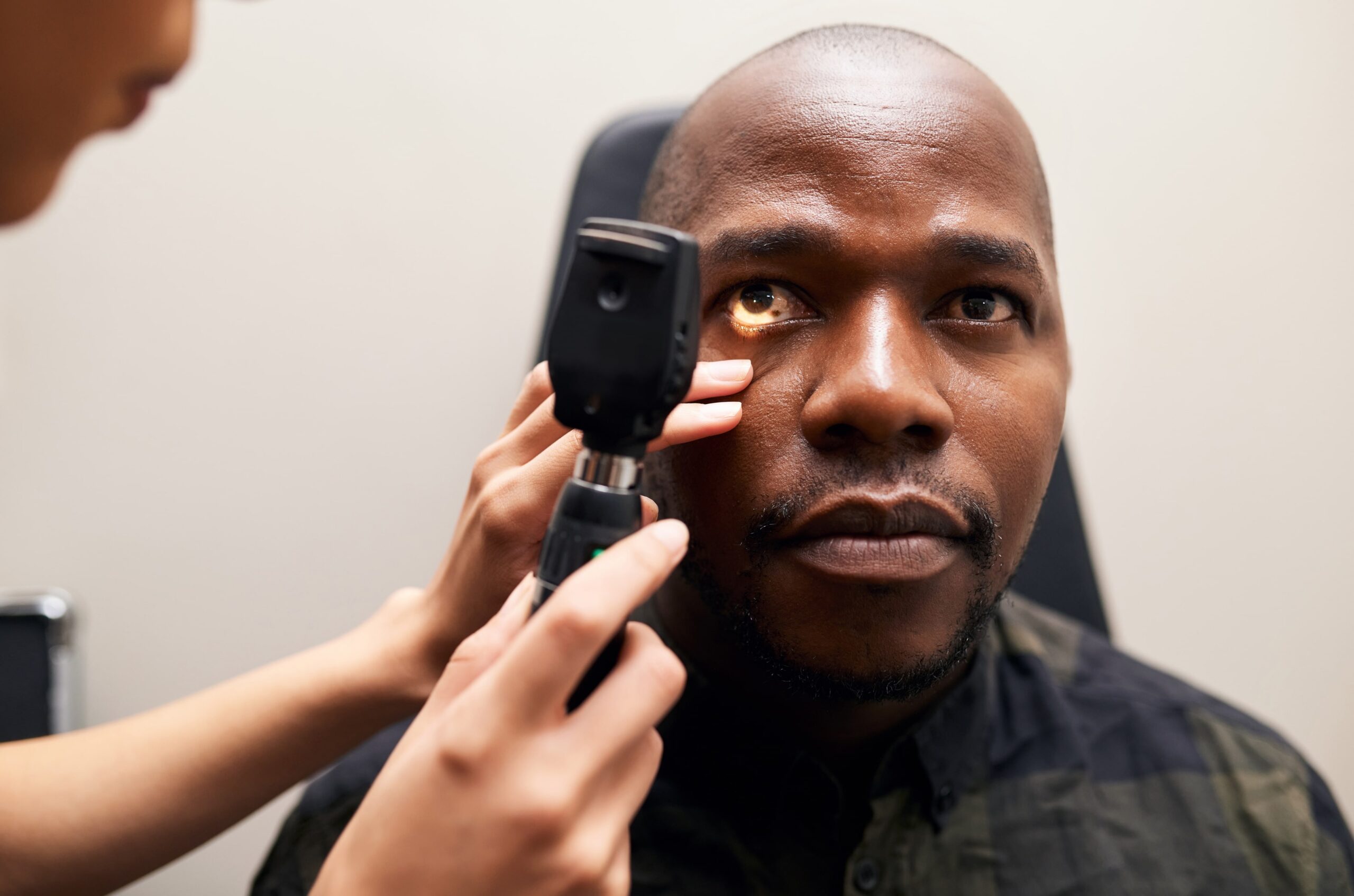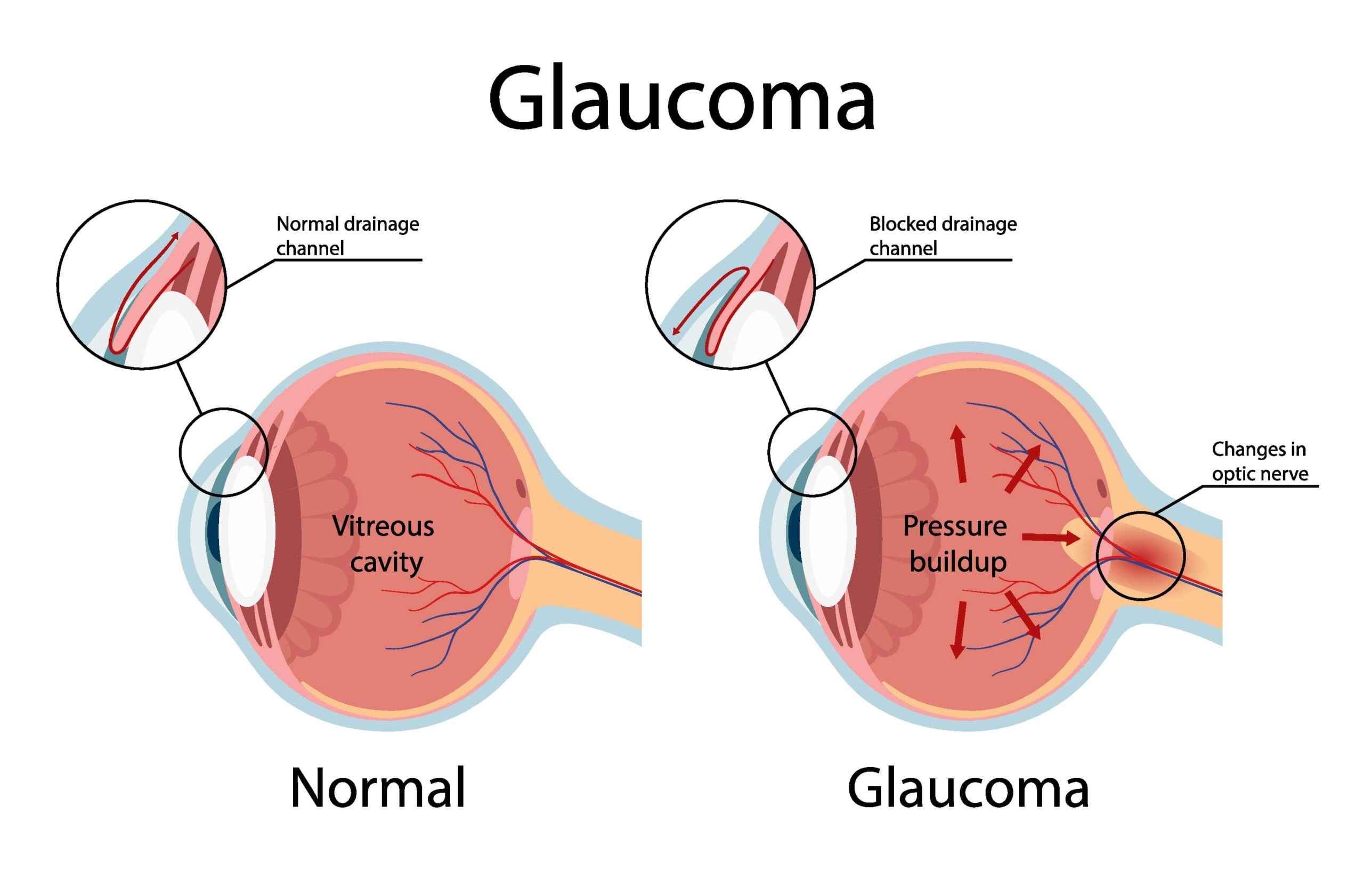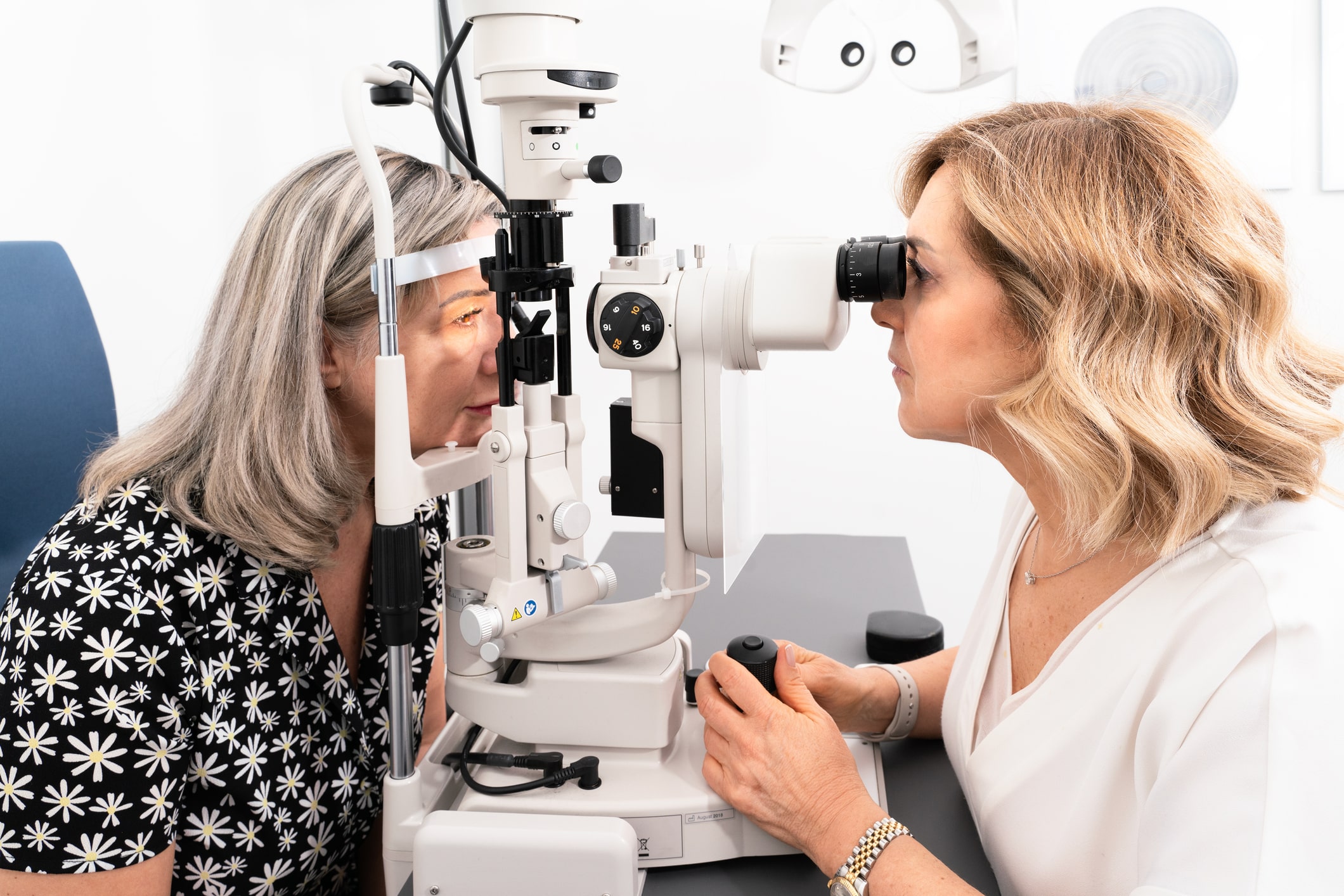Glaucoma is a group of eye diseases that can silently and gradually erode one’s vision, ultimately leading to blindness if left unchecked. This disease is a leading cause of blindness worldwide. It often develops without warning until it causes noticeable vision loss. Early detection and treatment are crucial in preventing significant damage and preserving vision, making regular eye exams an essential part of maintaining eye health.
Understanding the Basics of Glaucoma
Glaucoma is a complex eye disorder characterized by damage to the optic nerve, which is responsible for transmitting visual information from the eye to the brain. This damage is often, but not always, linked to high intraocular pressure (IOP). This is when fluid builds up in the eye, hurting the delicate optic nerve fibers.
Open-angle glaucoma is the most common type. It develops gradually. Patients are often unaware of it until they lose significant vision. In contrast, acute angle-closure glaucoma can appear suddenly. It causes eye pain, redness, and blurred vision. It requires immediate medical attention.
Diagnosing Glaucoma
Early detection is crucial in managing glaucoma, as the condition can progress silently without apparent symptoms in its initial stages. Comprehensive eye examinations are vital in identifying glaucoma at its earliest stages. These exams usually include a series of tests designed to assess various aspects of your eye health, including:
- Tonometry: Measuring intraocular pressure to assess for elevated levels.
- Gonioscopy: Evaluating the drainage angle between the iris and cornea.
- Optic nerve assessment: Examining the optic nerve for signs of damage.
- Visual field testing: Mapping the patient’s peripheral and central vision.
- Pachymetry: Measuring the thickness of the cornea.
Consistent eye examinations allow for early detection, timely intervention, and ongoing condition monitoring. The American Academy of Ophthalmology recommends the following screening guidelines:
- Ages 40-54: Every 2-4 years
- Ages 55-64: Every 1-3 years
- Age 65 and older: Every 6 months to 1 year
Those at higher risk for glaucoma should get more frequent screenings. This includes people with a family history or of African or Hispanic descent.
By adhering to these guidelines and prioritizing regular eye exams, patients can ensure that any changes in their eye health are promptly identified and addressed, maximizing the effectiveness of their glaucoma management plan.
Medication-Based Glaucoma Management
Prescription eye drops are the first line of defense for many glaucoma patients. These medications either reduce the production of aqueous humor (the fluid within the eye) or enhance its drainage, thereby lowering intraocular pressure and mitigating further damage to the optic nerve.
Depending on the severity of the condition and individual response to treatment, patients may be prescribed a single eye drop or a combination of medications. Proper administration and adherence to the prescribed regimen are crucial for optimal outcomes.
Laser Treatment
If eye drops alone are not enough or are hard to tolerate, laser treatment may be recommended for glaucoma. It may be the main or an extra treatment. These targeted procedures aim to improve the drainage of aqueous humor, thereby lowering intraocular pressure.
The most common type of laser treatment for glaucoma is called laser trabeculoplasty. During this procedure, the ophthalmologist uses a focused light beam. It creates small changes in the eye’s drainage system. This improves fluid outflow and lowers IOP. This treatment is often considered for patients with open-angle glaucoma who are unable to achieve adequate IOP control with eye drops alone.
Other laser treatments, like laser iridotomy for angle-closure glaucoma, may help some subtypes of the condition. Laser therapy can be effective for several years. However, its effects may fade over time. This may require repeat procedures or new treatments.
Surgical Interventions
If medication and laser treatments fail or are unsuitable, surgery is needed to manage glaucoma. These procedures aim to create new drainage paths for the aqueous humor. This will lower eye pressure and reduce optic nerve damage.
The most common surgery is trabeculectomy. The ophthalmologist creates a new drainage channel in the eye. This allows fluid to bypass the blocked natural drainage system. Other surgical options include inserting drainage devices, such as shunts or stents, and minimally invasive glaucoma surgeries (MIGS) that utilize small implants to enhance fluid outflow.
Surgical treatments can be very effective for glaucoma. But, they carry risks. These include infection, bleeding, and serious vision complications. Patients undergoing these procedures require close monitoring and follow-up care to ensure optimal outcomes.
Lifestyle Adjustments to Help
While medication, laser therapy, and surgery are the primary treatments for glaucoma, patients can also take proactive steps to support their eye health and complement their medical care. These approaches include:
- Maintaining a healthy diet rich in eye-friendly nutrients, such as vitamins C, E, and A, as well as minerals like zinc and copper.
- Engaging in regular exercise, as studies suggest that moderate physical activity may help lower intraocular pressure.
- Limiting caffeine and fluid intake, as excessive consumption can temporarily increase eye pressure.
- Exploring stress-reducing techniques, such as meditation or relaxation exercises, which may help manage acute angle-closure glaucoma episodes.
It’s important to note that while these approaches may provide additional benefits, they should not be considered substitutes for the medically prescribed treatments. Patients should always consult their eye doctor before incorporating new lifestyle changes or alternative therapies into their glaucoma management plan.
Contact Us for Glaucoma Treatment
Glaucoma is a complex and challenging eye condition, but with the right knowledge, proactive management, and support, patients can take control of their eye health and preserve their precious sense of sight. Early detection and consistent management are the keys to slowing glaucoma progression and minimizing the risk of vision loss.
At Florida Eye, we are committed to providing exceptional care and personalized treatment plans for glaucoma patients. Our experienced team of specialists utilizes the latest advancements and technology in eye care to ensure the best possible outcomes. Don’t wait to take control of your eye health – contact Florida Eye today to schedule an eye exam and explore your options for glaucoma management and treatment. Your vision is our priority.





